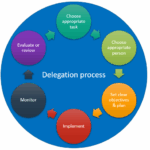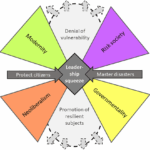Definition: Desk sharing is a workplace model in which multiple employees use the same physical desk or workstation at different times, rather than having assigned, permanent desks.
Key Characteristics
-
🔁 Non-exclusive use: Employees do not have dedicated desks.
-
🧑💻 Usage based on availability: Desks are used temporarily and shared among “mobile” or hybrid employees.
-
📉 Reduced desk-to-employee ratio: There are intentionally fewer desks than staff.
Common Use Cases
Desk sharing is particularly suited for organizations where:
-
Many employees work remotely, part-time, or in the field
-
There is a high level of workplace mobility
-
Flexible or hybrid work models are in place
Industries like consulting, IT, and creative services often implement desk sharing to align space usage with modern work patterns.
Advantages
✅ Cost savings: Lower demand for office space, furniture, and utilities
✅ Efficient use of space: Frees up square footage for collaboration zones or lounges
✅ Supports hybrid work: Aligns with flexible schedules and mobile work culture
Challenges
⚠️ Reduced personal space: Can negatively impact identification with the workplace
⚠️ Loss of territory: May conflict with employee needs for individuality and stability
⚠️ Logistics: Requires clear booking systems, storage solutions, and IT readiness
Desk sharing can be perceived as impersonal or disruptive if not well-managed. To mitigate these effects, companies often introduce locker systems, personalized storage, and comfortable shared areas to support informal interaction and community building.
Related Concepts
-
Hot Desking: Often used interchangeably, but typically refers to desks being assigned on a first-come, first-served basis each day.
-
Activity-Based Working (ABW): A broader model where employees choose workspaces based on task (e.g., focus, collaboration)






![15 Employee Offboarding Templates That Save Hours of HR Time [Free Downloads] 15 Employee Offboarding Templates That Save Hours of HR Time [Free Downloads]](https://i1.wp.com/www.hrcloud.com/hubfs/Header.png?w=150&resize=150,100&ssl=1)
